 Your new post is loading...
 Your new post is loading...
With the recent entry of key industry players like Apple into the wearables sector, the demand for these devices has risen. So much so that YouGov estimates that there will be 6.1 million wearable device owners in the UK by the end of 2015 and Juniper research says that global retail revenue from wearable devices will have reached $53.2bn (£34.9bn) by 2019. Of this, smart watches are expected to replace fitness devices as the most purchased wearables category by 2017.
With more and more consumers expected to purchase smart watches in coming years, these devices have the potential to become ‘consumer companions’ comparable to the smartphone. As a result, they provide brands with the ability to get, very literally, closer to their target customers.
The data collected by wearables will give marketers a unique understanding of audience behaviour on an individual level. For example, marketers will be able to identify where a user has been and the interactions they have had, as told by their geo-location data and the apps they have connected to. This will be invaluable for marketers in learning how to better target consumers, particularly if they can understand wearables within the context of other devices used in the wider purchase journey....
Amid widening concerns that another startup bubble has formed, digital media remains a white-hot market among the private-investment community.
Last year, venture capital poured at least $683 million into digital media companies worldwide -- more than twice the $277 million invested in 2013, according to Preqin, which tracks venture-capital investments.
That investment comes as traditional media companies like The New York Times and Condé Nast cut staff, trim costs and turn over every possible rock in search of new revenue streams. Meanwhile, digital media companies -- which have a fraction of old media's revenue and even less of their profits -- are awash in investor cash....
A while back, we questioned Stonyfield Farms’ decision to drop its customer loyalty program.
Now, it seems that the trend may be picking up some steam — although we still question the wisdom of this in today’s competitive marketplace. Take the examples of the Pathmark and Waldbaum’s supermarket chains.
What’s the difference between disruptive tech and that of emergent or innovative technology?
...Instead of reacting to technology trends at departmental levels, some progressive, brave and tireless strategists (aka change agents) are investing in a more comprehensive campaign of digital transformation.
The goal is to invest in informed models that help businesses recognize opportunities, overcome challenges, and make decisions to stay in step, if not ahead of digital customers. Digital transformation is in fact, the next big thing in customer experience and ultimately how business is done....
2013 was a year when the phrase ‘social media marketing’ became simply ‘marketing’. You can’t have a marketing strategy any more that isn’t social – not just the practice of sharing TV ads online, but where calls to action and engagement are central to their success.So what’s next for social marketing? Let’s take a look forward into 2014 and see where this year’s momentum is taking us...
I hear a lot of buzz about influencer marketing — how it has evolved, how it comes in different flavors and how brands are using it — but I never hear anyone talk about Google’s plans to change it… dramatically!
An Emerging Channel When brands first began to capitalize on the power of influencer marketing, they tried to do so with casual and subtle efforts that often included complimentary products or other perks. Moreover, they usually kept their efforts “under the radar.” Traditional blogger outreach programs are a good example of this, where brands would give product samples to bloggers in exchange for a blog post or two.
But traditional blogger outreach has changed considerably. Large blogger communities like Triberr, Sverve and TapInfluence have evolved into transparent marketplaces where influencers and brands can collaborate to develop content and get the word out. Such marketplaces allow influencers to post their offerings, audiences and pricing so that brands can select the profiles that best align with their needs....
Traditional marketing ruled for over one hundred years and not only endured the last 50 years of television, but thrived. Alas, the Internet is proving a more formidable foe to the notion that all it takes to get market share is to interrupt your prospects over and over again until they buy out of sheer brain-washing!Here is an infographic on where on the Internet companies are pursuing content marketing and the results they’re realizing and their plans for the next year. Where do you stand on content marketing and how are you using it to help your business?...
Business leaders in much of world have sought for a long time to build local, regional and global brands that add significant value to their organizations. Today, in China, we see the same phenomena emerging as Chinese brands move from being local to regional to national and now to global entities.China’s people drive the change. Historically, the people of China generally have been savers rather than spenders. However, as the economy strengthens the Chinese are changing and causing the businesses they buy from to change too. Government policies and initiatives encourage the formerly conservative Chinese consumers to release some of their hard earned money and spend it on goods and services, driving GDP growth.
This slow but steady, and now very noticeable, transformation is affecting every business across China. Consumers are learning to buy more products and services for reasons other than price. They’re paying attention to brand....
...People young and old are becoming more aware of the role advertising plays in their lives. This is a good thing because the internet has brought the advertiser and consumer closer than ever. No longer is the marketing realm confined to static magazine inserts or two-minute TV slots. Brands are sponsoring events, generating discussion, and taking part in all kinds of crazy activity in the name of generating brand awareness. Because of a growing understanding amongst people that they are ‘being marketed to’, advertisers have had to turn down the volume on their own material. Instead, storytelling is becoming more of a central feature than ever for advertisements and marketing videos alike. This is the stuff of now and of the future – delivering big and unique ideas and tapping into emotions and dreams. It’s all about marketing that is so enchanting you forget there is a price tag. But another trend is also gaining in popularity, and its the complete opposite of subtle – meta-advertising. This is marketing that is entirely self referential in quality, it involves a complete renouncement of subtlety, its a reaction against traditional advertising and a nod to the increasingly self-aware and savvy minds of the audience. Meta-advertising has the power to hold our attention, to make us laugh, be original and creative. But its most important and powerful attribute is honesty (or the appearance thereof).... It's an intriguing trend....
Social media marketing tips: Learn how calls to action, content strategy, email/social integration and goals play a part in your social media efforts. Are you looking for actionable tips to improve your social media marketing? Are you wondering what the common themes of social media experts are these days? This April, 1,100 passionate marketers from every corner of the world traveled to San Diego for Social Media Marketing World (#SMMW13), to find out. The number of conference takeaways and buzz was immense. For this article, I’ve focused on 26 takeaways from SMMW13, including notable quotes by presenters and their session titles....
The Top 100 corporate brands experienced a general decline in 2012 favorability scores, according to CoreBrand, a brand consultancy and creator of the Corporate Branding Index. The company, which provides benchmarking data, insights and corporate brand valuation for more than 1,000 companies across 54 industries, on Wednesday released its Sixth Annual Top 100 BrandPower Rankings Report, which ranks 100 corporate brands in terms of market reputation and awareness. Favorability scores measure overall reputation, perception of management and investment potential. The decline indicates that in the current economic climate, consumers are evaluating corporate brands more harshly, and these brand criticisms are being amplified with the proliferation of social media and the 24-hour news cycles, says James R. Gregory, founder and CEO of CoreBrand. “Now more than ever, it is important that companies improve the quality of their messages to the marketplace and focus on rebuilding trust, according to the company,” he says....
Content on social media networks Is vital to create engagement with your prospects and customers. There is a fast emerging trend for content to be written and produced in snack size bites. This could be video, text or visual mediums. Our attention spans seem to be following the development path of micro-processors. Smaller and faster. The art of the long conversation, the slow contemplation of the future of the planet over a meal and prolonged human concentration have maybe become so endangered that we don’t value depth of thought and long form communication anymore. Dinner parties could soon become 15 minute events....
85% of consumers say it is important or very important to them to do business with a company for which they have strong emotions, per survey results [download page] released in November 2012 by rbb Public Relations. But that connection is more important in some industries than others, and appears to matter more in industries where products are more complex and less of a commoditized.
For example, 76% of respondents say that an emotional connection is important from healthcare providers, with that connection built upon personal and proactive communications from the provider. Banking (63%) was next, followed by professional services (62%). A high proportion also value emotional connections when it comes to travel (56%), insurance (55%), auto (52%), technology (44%) and food (also 44%)....
|
When’s the last time you watched just one episode of House of Cards in a sitting? As marketers, we’ve entered a new era of content engagement—one in which interested buyers consume content much in the same way they “binge-watch” their favorite shows on Netflix.
We’ve put together a new infographic to help you understand, at a glance, what the Netflix era means for marketers and why leading brands are shifting from scheduled to always-on marketing. Here’s a quick summary of the key takeaways....
With knowledge being the currency of the future, and unbiased information more accessible than ever before, it’s not surprising to see that brands are embracing simplicity and transparency as pillars of their product, messaging, and marketing strategies. A notable shift from pre-digital strategies, where information was often obfuscated and protected, changing consumer sentiment is driving this change – and products are getting better.
Amazon Elements and Target Made to Matter are two great examples of this new approach. At their core, both focus on a fundamental understanding that consumers want to know what they are buying ... from the raw ingredients that go into the products and packaging to the overall environmental impact of the manufacturing and logistics processes. And because openness was embraced from the start, both deliver innovative ways for consumers to interact with that information – including full-featured online product specs as well as scannable product codes that deliver detailed package-level information. Beyond product content, both companies have also incorporated consumer feedback into the product development process, highlighting the importance of a more collaborative, inclusive brand experience....
A recent report by The Economist Intelligence Unit called “Visions in Marketing” highlights the innovations in Marketing, marketing strategy and the practical applications of those marketing strategies in forward-thinking companies
The report states that “The role of marketing is changing” as companies further leverage data and customer insights to deliver content across a wider variety of consumer channels.
And the role of the CMO “will evolve in response to changes in their business models, the ability to access ever-growing markets and a more detailed understanding of the customer than ever before.”...
I have bad news for companies that are struggling to improve their customer engagement—it’s only going to get more difficult.
...They also shared ideas and best practices where there’s common ground. “People want to learn, borrow, and understand what other industries are doing to solve similar problems,” said Bob Weiler, Executive Vice President of Oracle’s Global Business Units.
The customer experience is one such area—a challenge, opportunity, business goal, and IT undertaking all rolled into one here-and-now, make-or-break imperative.
“The customer is in the driver’s seat. We need to get in front of what her needs are,” said Karen Katz, CEO and President of Neiman Marcus Group , during the Oracle Industry Connect keynote for retailers....
Arguably the biggest shift in consumer behavior in the last few years has been the explosion of devices and the number of screens in a consumer’s life. That has a major impact on media consumption and how marketers reach consumers.
It’s almost time to say goodbye to 2013, and that of course means saying hello to a whole roster of digital media trend predictions for the new year. But as far as we know, no one has a crystal ball, and the digital media world changes so quickly that it’s hard to really predict much of anything.That’s why Digiday asked some brand executives to weigh in on some of the bigger brand predictions they’ve heard — and call BS. From real-time marketing actually getting better to brands figuring out storytelling — see why these predictions need a reality check....
Social_Spam_Advertising: Buy From Me!!!
It feels like everyone in the social universe has something for sale. Attend my Twitter Chat Subscribe to my blogPurchase my bookLike my Facebook page
While I am certain (certainly cynical) that every one of these chats , blogs, books, and pages are the single most informative, game changing, and perhaps life altering ways that a person could spend their time, I am beginning to question when Social Media platforms turned into other more intrusive marketing methods?
May I ask… when is it appropriate to revisit the rules of professional selling or perhaps just civility?...
Almost two-thirds of consumers (63%) have bought products online before collecting them in-store at least once in the past 12 months, while 16% use reserve-and-collect at least once a month.
Overall around a fifth (22%) of consumers said they have never used the service, which is actually a very slight increase compared to 2012 when the figure stood at 20%.
Even so, the data highlights the continuing importance of reserve-and-collect services for multichannel retailers as a sales tool. The Multichannel Retail Survey, conducted using the Toluna survey tool, also found that 50% of respondents had abandoned a purchase online due to unsatisfactory delivery options....
Americans are increasingly abandoning traditional television. In 2007, the number of "Zero-TV" households was around 2 million. It has since grown to more than 5 million, according to a recent Nielsen report. We first saw the news on Google Ventures Partner MG Siegler's personal blog. Nielsen defines "Zero-TV" households as those that don't fit into its definition of a TV household. It doesn't mean that those households don't have traditional TV sets, but it's just that the majority of them get their content from computers, tablets, and smartphones. In short, it means they're not paying for cable. But here's the real kicker: nearly half of these "Zero-TV" households are under the age of 35, marking a clear trend in our viewing habits. Anyway, look at this chart. It shows traditional TV households versus "Zero-TV" households broken down by age...
How do colors affect us when we buy things? The latest research reveals the science of colors in marketing and how to use it for your advantage: Why is Facebook blue? According to The New Yorker, the reason is simple. It’s because Mark Zuckerberg is red-green colorblind. This means that blue is the color Mark can see the best. In his own words Zuck says: “Blue is the richest color for me I can see all of blue.” Not highly scientific right? Well, although in the case of Facebook, that isn’t the case, there are some amazing examples of how colors actually affect our purchasing decisions. After all, the visual sense is the strongest developed one in most human beings. It’s only natural that 90% of an assessment for trying out a product is made by color alone. So how do colors really affect us and what is the science of colors in marketing really? Let’s dig into some of the latest, most interesting research on it....
I can’t think of a year that brought more innovation to the inbox than 2012. New ideas about managing email are coming from everywhere -- some from big mailbox providers, like AOL’s Alto, but lots from entrepreneurs and developers that just see a new way to experience email. As more and more gain traction in 2013, they have the potential to totally change the email ecosystem in ways that are great for consumers. That doesn’t mean they’re bad for marketers. Here are a few of the emerging email trends and technologies worth watching -- and more important, planning for -- in the next 12 months....
For over a decade, traditional media companies have pointed to digital media as a promising source of revenue growth -- but as 2012 draws to an end, it’s clear that this promise is still more theoretical than real, while ad dollars continue to migrate away from traditional channels. This is particularly true for broadcast radio groups and newspaper publishers, whose 2012 results have (so far) offered little in the way of digital cheer....
|



 Your new post is loading...
Your new post is loading...



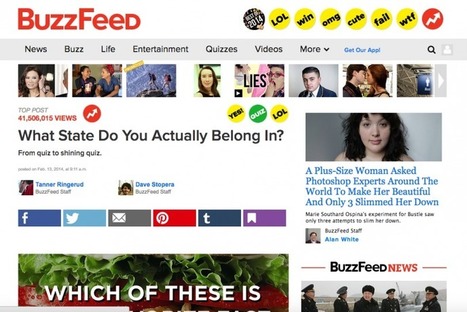

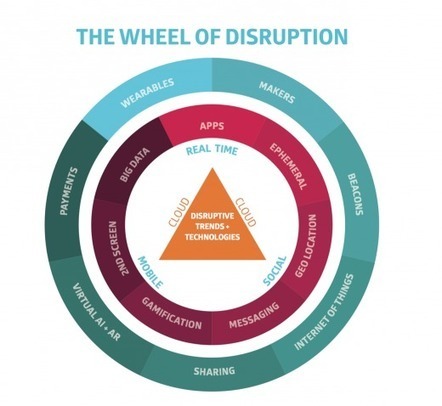




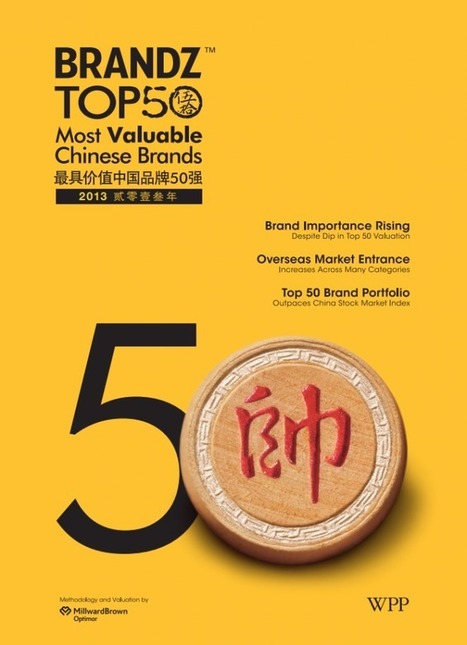






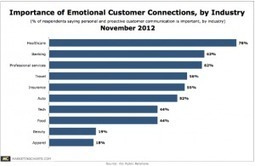
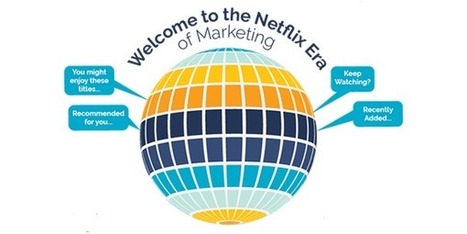






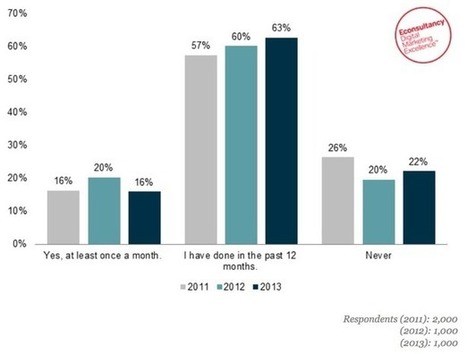
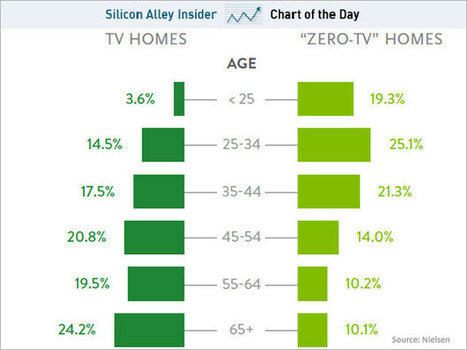








Communicating with consumers via wearables presents opportunities and challenges.
Wearables: New challenges and opportunities